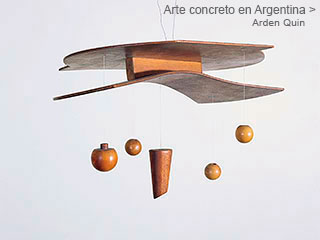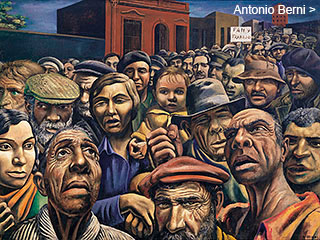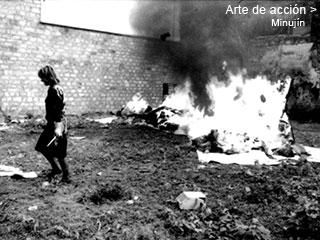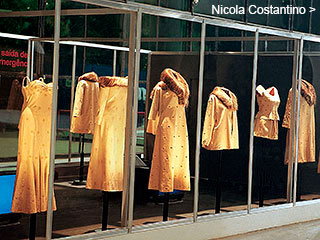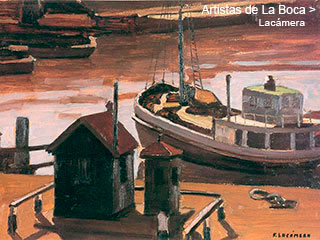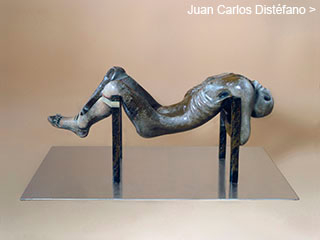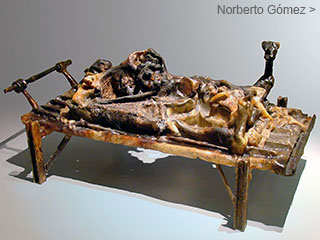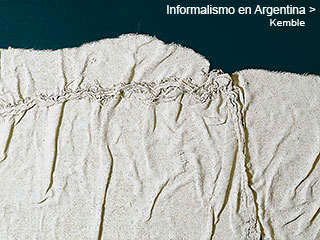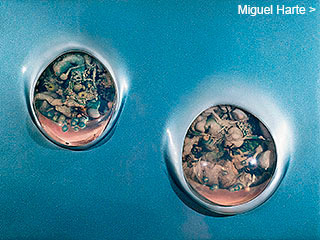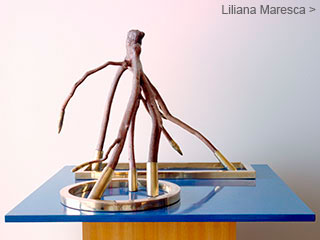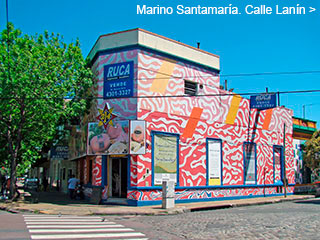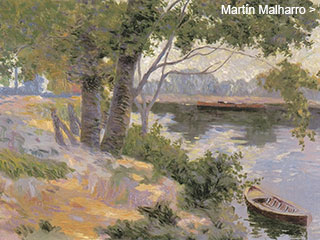Menú
Algunos dossiers
Concrete Art
in Argentina
in Argentina
by
Adriana Lauria
January 2003
January 2003
Abstraction asserted itself in Argentina through the achievements of groups such as Arte Concreto-Invención, Madí and Perceptismo, which developed their activity since the second half of the 1940s. These groups constituted the first organized national avant-garde and made their aesthetics known to the public through exhibitions, magazines, manifestoes, leaflets, lectures, etc.
Documents
Explanatory note
"Nota Explicativa (Explanatory Note). Flyer of the Third Exhibition of Painting. Buenos Aires, Centro de Profesores Diplomados de Enseñanza Secundaria (Center of High School Graduated Professors), 1946.
Concrete art constitutes the result of an aesthetic process began in the second half of the previous century, under the influence of new social and technical conditions determined by the industrial revolution. During that process, the work of art has been accomplished through a leaving, gradually sharper, from what the public usually understands for reality. Yet this feature –a feature common to most of the movements called modern–, far from implying a denial of human and aesthetical values, has made possible, in practice, the most categorical assertion of man’s inventive ability.
Concrete artists have been aware of this process and have proclaimed an aesthetics, according to which the worth of a work depends, exclusively, on the invention of its internal relations, and not on a represented anecdote. That is to say, they deny the aesthetical worth of the illusions upon which the representative technique is based, and they exalt the specific functions inherent to the work of art, in earlier times laid at the service of mere copies or descriptions.
The work attains thus an unquestionable reality. It constitutes a real matter whether of knowledge or of direct experience for man, not a fraud system emerged from his fear. This way, the new artists transform each work in an active revolutionary factor, addressed to adequate the field of human sensitivity for the exercise of new faculties. That is to say, for the first time, the Concrete artist attempts, consciously, to make of his work a form of human practice.
In the new art, painting, music or poems are no longer parasites of the esoteric or the unknown. This permanent exaltation, which the representative artist vainly demanded from mystery or from illusory images, is, in Inventionismo, a function of the concrete aesthetical virtues of a work. Therefore, concrete art has turned the wondrous into an everyday reality, into a usual experience of man.
In their works, Concrete painters propose not only to affirm the material reality of the co-planar areas, their bi-dimensionality, but also to entirely invent the paintings, to achieve thus an integral structure.
In the art of space, the millenary sculptural structure, based in the balance of volumes, has been replaced with the Inventionista relation of the depth directions.
In music, the old forms have given place to a purely elementarist composition, freed from the ancestral representative remains.
In poetry, the invented concept, in opposition to descriptive images, tends to make of each poem no longer an enunciation of objects, but a way of prominent mental activity.


